Stories From the Neopets Economy
What is Neopets?
Neopets is a website about, well, Neopets, which are cute animals you can own as pets. The main currency of Neopets is Neopoints, abbreviated NP. You earn NP from playing Flash games, getting lucky from random events, and playing the market.
It was biggest in the early 2000s, then faded from relevance, but it’s still around. I like to check it out now and then, mostly for nostalgia reasons. It’s pretty interesting. Depending on where you look you can see the evolution in web design between the old and new parts of the site. (I should warn you that Neopets currently doesn’t support HTTPS and it sends passwords in plaintext, so be careful.)
What you do in Neopets is up to you. There’s no clear goal to the game, and I think that’s why it manages to stick around. Everyone who’s stuck around has found something that pulls them in. Some just like the Flash games. Others become collectors of weird items. A few (like myself) get into the battling scene, leveling up their pet at the Neopets training schools and saving up Neopoints for powerful weapons.
Like I said. It’s all up to you.
What isn’t up to you are the laws of supply and demand. In the end, most goals cost Neopoints, and any game that’s run for 18 years is bound to have its share of economic stories.
That Time Neopets Changed Pet Art, Creating a New Scarce Resource
In 2007, the Neopets team standardized Neopet artwork. All Neopets of a species would have the same pose, regardless of color. This was done to reduce the art load for features like clothing. With a standard pose, the clothes can simply be overlaid on top of the Neopet, reducing the combinatorial complexity of the art assets. Many outfits are only buyable with NeoCash, the pay-to-win currency, so there are some pretty clear monetary reasons involved.
Some users got angry. Many were drawn to their Neopets because of what they looked like, and some felt that the new artwork lost some of the charm and individuality of the old art. As a comparison, here is some old artwork for the Darigan color.
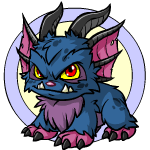
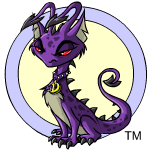
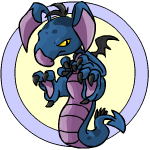
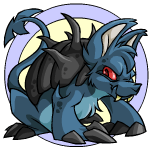
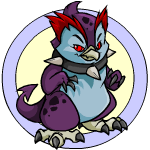
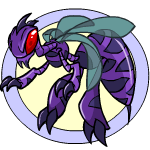
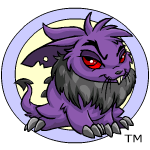
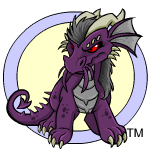
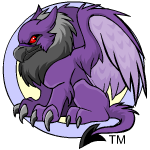
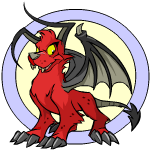

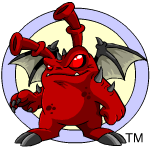
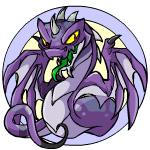
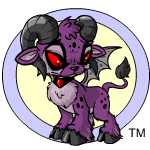
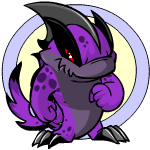

Here is the new artwork for the same set of Neopets.
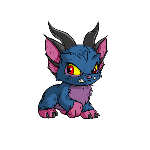
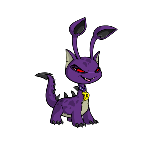
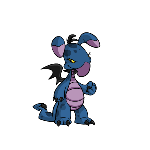
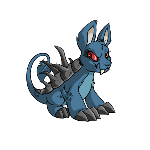


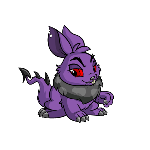
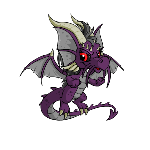
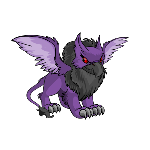
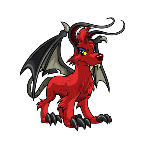
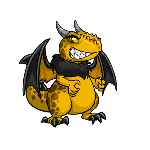
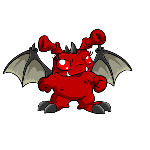
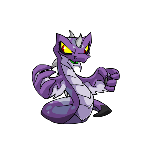
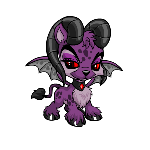
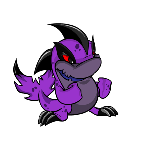
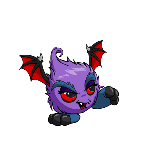
You can see that the style is preserved, but the poses are more homogenized. Personally, I don’t think this is a big deal, but I’m not big on pet aesthetics.
Not all the new art was ready at launch time, so some pets kept their old art. As an apology of sorts, the Neopets team made conversion of these pets optional. These pets became known as UC pets, for unconverted.
Since new UC pets are impossible to create, there’s a fixed supply, and where there’s a fixed supply, there’s speculators. Owning a UC pet is a big deal. Some genuinely prefer the old art, whereas others simply treat them as a valuable bargaining chip in the pet trading market.
You can read more about this topic from this Reddit thread and the Neopets wiki. When researching this, I even found a page where you can buy UC pets, with classifications based on how well the Neopet is named. I find this ridiculous, yet excellent.
That Time People Abused a Duplication Glitch and Crashed the High-End Economy
In 2014, Neopets was sold from Viacom to JumpStart. During the transition period, the site was lagging horribly, and a bunch of things…just stopped working.
Games: broken (HSTs not reset)
Restocking: broken (only restocking once an hour or so)
User shops: a little broken (overstocking)
Battledome: broken forever (not really, it’s just a little glitchy)
Keyquest: still broken (broken since transition)
Contests (Art Gallery, Random Contest, etc.): broken (submissions don’t work)
Galleries: broken (you can add/remove but you can’t rank)
Petpages: NEIN NEIN NEIN (you cannot edit petpages. at all. no petpages for you.)
Neomail: bit messy (neomails displaying as “read” instead of “replied”)
Wishing Well: worst genie ever (has not granted wishes in days)
Employment Agency: everyone is on state benefits (no job listings)
Guilds: pretty broken (rank names and layouts can not be edited)
Pound: having numerous issues. (adopting neopets is not a good idea right now)
Our hearts: broken (TNT WHYYYYYYYY)
During the lag, a few users discovered that if you sent a bunch of requests at a fast enough rate, the servers would get confused and duplicate items. Several Neopets items cost hundreds of millions of Neopoints, and a few trolls started duplicating items and selling them at deliberately low prices.
Credit to this Reddit thread and this article for documenting some of the madness. First they auctioned some morphing potions for cheap.
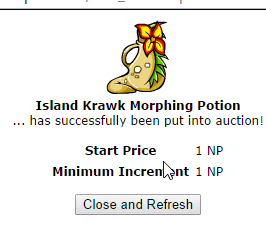
(Current price: 820,000 NP)
Then, they duplicated powerful Battledome items.
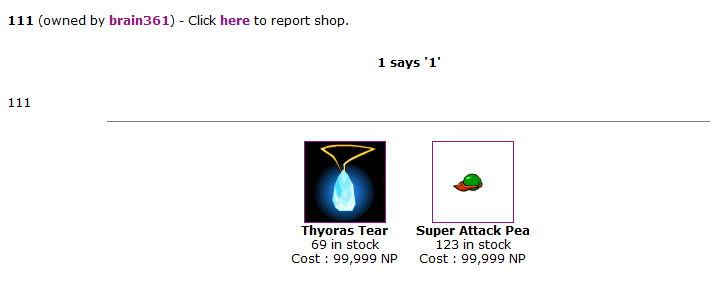
(Current price: 28.5 million NP for Thyoras Tear, hundreds of millions for Super Attack Pea)
It got worse when people started releasing scripts to automate dupe attempts.
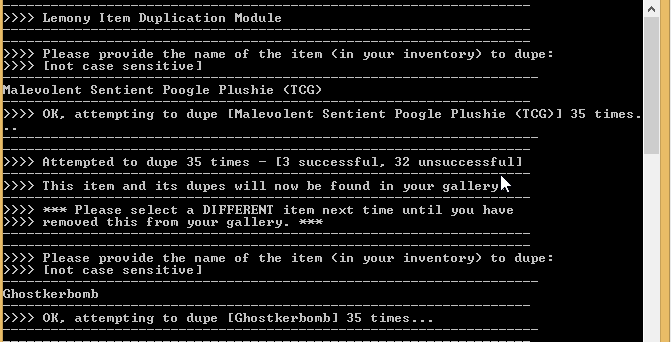
You have to imagine how disappointed some cheaters were. Here they are, trying to silently exploit a glitch to make millions, and then the trolls show up and ruin everything by making the exploit super obvious. Like, ugh, couldn’t they exploit their MMO-breaking bug in peace? The glitch got patched immediately.
And by immediately, I mean 4 days later.
Also, they didn’t rollback the servers. Instead, they banned the abused, removed all the obvious-looking duplicates, and warned that anyone taking advantage of the glitch may be banned. It can take months to hear back from Neopets support to appeal your ban, thanks to understaffing and a massive backlog. There was some paranoia.
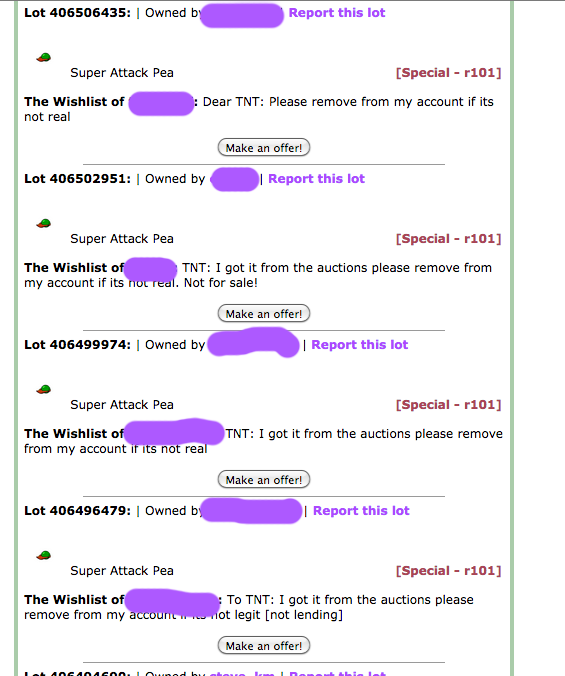
There are reasons not to do a rollback. It’s a nuclear option that’s very disruptive for other users. However, it’s also one of the few ways to guarantee invalid items are no longer in circulation. Users adopted smell tests, based on whether the price was too good to be true, or if the account seemed too young to own a valuable item. This only goes so far. Once a dupe gets laundered through a few users, it’s hard to identify it as a fake.
Ironically, by avoiding the nuclear option, the Neopets team ended up creating a radioactive fallout around high-end items, since buying them came with the risk of losing your account. It took several months before people felt safe buying these items. If you check prices, it’s obvious that some dupes are still out there, but what can you do? Super Attack Peas used to be over 1 billion NP and now they’re about one-fourth of the price. That’s just a fact of life now.
That Time Neopets Decreased Sale Friction and Prices Dropped Accordingly
For a long, long, long, looooooooooong time, the max price of items in user shops was 99,999 NP. For anything more expensive, you had to sell on the Auction House or Trading Post. In practice, the Auction House is only used to close already agreed-upon deals from the Trading Post, leaving the Trading Post as the de-facto selling ground.
When I played more actively, I found this very annoying, because it takes so much longer to buy items from the Trading Post. Here’s how you buy items from shops.
- Go to the Shop Wizard and search for your item.
- It gives you listings in order of lowest price.
- Buy cheapest one. The transaction is instant.
Here’s how the Trading Post works.
- Go to the Trading Post and search for your item
- It gives you listings where people write how much they want, except most people just say “neomail me offers”, which makes it hard to figure out the market price.
- You haggle with the seller in an NeoMail back-and-forth.
- You get the item a few hours or days later, depending on how much your activity overlaps with the other user.
In short, there’s a lot of friction. There’s also information asymmetry. When a deal closes, it isn’t publicized. Only the people involved in that transaction know the final terms. Sellers ask for more NP than the item is actually worth, because it’s hard to prove them wrong, and it’s up to the buyer to propose the right price. The Shop Wizard is buyer-favored. The Trading Post is seller-favored.
Recently, the max shop price was increased from 99,999 NP to 999,999 NP. It was a great change that improved accessibility of several items, leading to price drops across the board.
I think the thing most people don’t realize is that honestly, it hasn’t caused items to go down in value, these are what the values truly should have been.
With the trading post, you don’t see the true scarcity / supply of the item because people have to keep posting trade lots, if they have a bunch of items to sell they take it down to put up other items, items sitting in SDBs, etc.
Upping the shop price limit essentially meant that we will finally see closer to the real supply of the item(s) and thus, the market will determine the price.
The TP is abused a lot to hide the true supply of the item and make it appear as if there is less of something than there is, resulting in an inflated price. (Like when people buy up all of an item off the SSW before the price increase and then say “Oh give me 300k+”. The price difference between shops and trading post allowed for this manipulation)
So honestly, all it did was allow the market to actually determine values instead of letting users manipulate the perceived supply and inflate prices.
I’m all for it
I was selling Turned Tooths at the time, and it was pretty amazing to see all the Turned Tooths disappear from the Trading Post, then reappear in the Shop Wizard at 60% of the asking price. I knew they weren’t as valuable as everyone wanted them to be, but it was something else to see it happen live.
That Time a Book Got 1000 Times More Expensive Because of Charity
Here’s a secret about Neopets: 99% of the items are useless.
Despite this, some useless items still have high prices, because of their rarity. Neopets has a built-in rarity system, explained here. For our purposes, the important rarities are rarities 1-99. These items are sold form NPC shops, and the rarity defines how often that item is in stock. Rarity 99 items restock very rarely, giving them an allure of their own. Many users like filling out their Galleries with all the rarity 99 items they can get.
Let’s talk about the Charity Corner. It’s a yearly event where you can donate gifts to Neopians who need it. Awwwww.
The way it works changes each year, but here’s how it worked in 2015 and 2017. Donatable items fell in three rarity bands: r70-79, r80-89, and r90-99. The Charity Corner only accepted a few category of items, one of which was books. For every five books you donate, you get a random item sampled from the rarity band you donated. For example, you donate five rarity 90 books, and you get a random item from rarity 90 to 99.
This sampling wasn’t weighted by rarity, so this gave decent chances of getting a rarity 99 item, and a lot of cheap items have rarities in the low 90s.
No surprises for what happened next: users began buying out the cheapest rarity 90 items they could find, swarming to the next cheapest item once users adjusted their prices accordingly.
JellyNeo tracks historical logs of item prices. Here’s the 2015 price log for Realm of the Water Faeries, a rarity 92 book. Can you guess when Charity Corner ran that year?
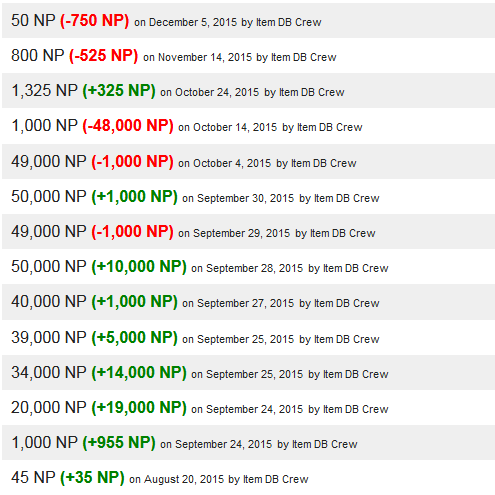
A price spike form 45 NP to 50,000 NP. No big deal, just a 1000x increase. Here’s the 2017 spike, with a more modest spike of 100x from 300 NP to 30,000 NP.
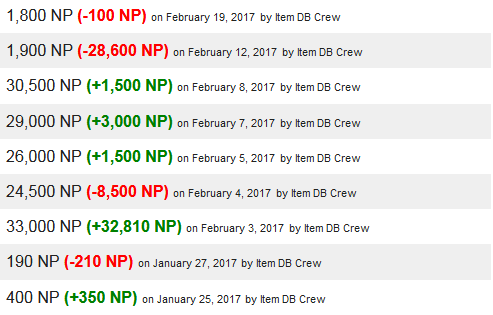
I didn’t participate in Charity Corner, but it ended up affecting me when I was shopping for Battledome weapons. I wanted to buy a Wand of the Dark Faerie. It used to cost 350 million NP, way more than I ever thought I could achieve. These wands are given out for reaching level 50 in the Jhudora quests. Part of the reason they’re so expensive is because you need several rarity 99 items to reach level 50. The increase in rarity 99 items from Charity Corner ended up decreasing the price to 40 million NP. Still a lot, but a lot more manageable.
That Time A User Donated a Billion Neopoints to Help Save the Economy
All MMO economies are defined by their sources and sinks. How does in-game currency get created, and how does it get deleted?
Take MapleStory, a game I played a lot in my youth. Monsters create money when they die. NPC shops remove money when they sell you healing potions. Whenever you trade with a user, a small percentage of the transaction is taken as tax.
Monsters and NPCs are parts of all RPGs. But why is there a user tax? The more monsters killed, the more money there is in the economy. In MapleStory, the in-game currency is called Mesos. When there are more Mesos, each individual Mesos has less buying power. The tax helps keep inflation in check by removing Mesos from the overall economy.
In Neopets, Neopoints enter the system through Flash games, and leave from NPC shops. There’s no transaction tax, so inflation is only held in check by whether users spend money at NPC shops or not.
Remember that NPC shops restock items of varying rarities. The NPC price for rare items is much lower than the true market price, leading to a practice called restocking. You refresh a shop page until rare items appear in stock, buy them for cheap, then sell them to users at a much higher price.
As a kid, I thought restocking was magical. I played Neopets with my friends at the local library, because my local library had a super fast Internet connection. In a Neopets restock war, milliseconds matter. It was basically high-frequency trading, except performed by millions of children instead of bots.
As an adult, I now recognize the profit from restocking is basically the equivalent of scalping. There’s arbitrage between the NPC market and the user market and you’re getting compensated for the time spent.
From a game design point, scalping is actually good for the game, since it gives new players another way to earn Neopoints. But the low NPC shop prices meant that NP wasn’t leaving as quickly as it needed.
Users with enough economics knowledge to recognize the problem petitioned the Neopets team to add more NP sinks to the game. They obliged. Here are two I like a lot.
The Lever of Doom: Pulling this lever makes you lose 100 NP. That’s all it does.
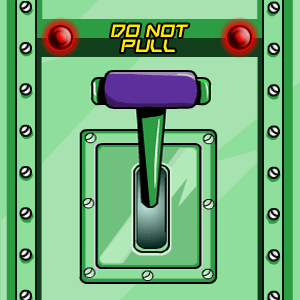
Why would you even pull this lever? Well, every pull has a small probability of giving you a Lever of Doom avatar you can use on the Neopets message boards. That was enough to get avatar hunters to spend millions of NP chasing the avatar.
![]()
Would you pay for this? I wouldn’t. But you do you.
The Hidden Tower Grimoires: The Hidden Tower is the most expensive NPC shop in the game, selling items for millions of NP. Unlike other shops, all Hidden Tower items are always in stock. This reverses the dynamic - most Hidden Tower items are buyable from users at a slight discount from the base price. Bad for inflation, since users don’t spend money at the NPC store.
The Hidden Tower Grimoires are books, and unlike the other Hidden Tower items, they’re entirely untradable. You can only buy them from the Hidden Tower, with the most expensive one costing 10,000,000 NP. Each book grants an avatar when read, disappearing on use.






Remember the story of the I Am Rich iOS app, that cost $1000, and did literally nothing? Buying the most expensive Grimoire for the avatar is just pure conspicuous consumption. I think these avatars were actually a pretty smart move. They target the top 1% by creating a new status symbol.
Alone, these two weren’t enough, so in 2010, the team decided to go all out, with a month-long Save the Wheels Campaign.

The Wheels are a site feature where you pay a small NP fee to spin a wheel to get prizes. They’ve been around since the start of the game, and they needed a visual rework.
Seeing an opportunity, the rework was branded as a renovation project. Users who donated Neopoints would receive thank-you gifts from the Neopian Conservation Society, and the top 10 donaters would be listed on a public leaderboard. The most expensive thank-you gift required donating 2,000,000 NP at once.
There are lots of user stories about people who come back to the site, dig through their storage, and discover an item is now worth millions of Neopoints. For example, it could be a stamp from some random event, and now it’s part of a stamp album that stamp collectors want, and they were only given out from that random event ten years ago. Any time Neopets runs something that gives out items which will never be given again, you can be sure that some users will get as many as they can as a long-term investment strategy.
You can see the final tally at the official Neopets page for the event. Users donated 12,371,694,534 NP in total, with the top user donating over a billion NP by themselves.
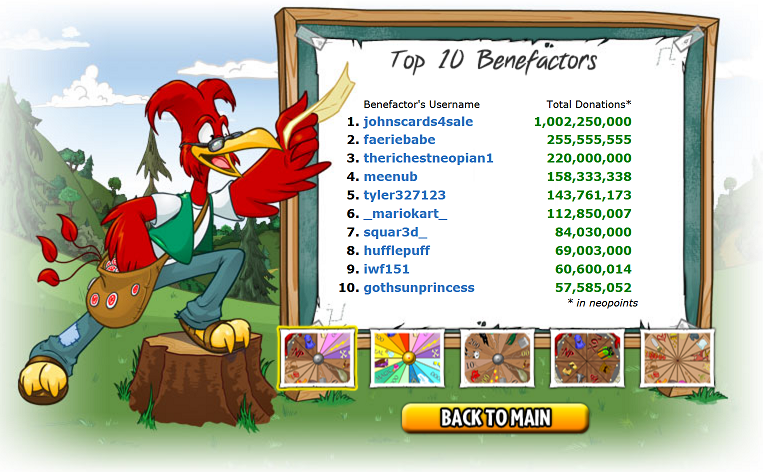
And okay, sure, it’s not like they asked users to donate NP for the good of the economy. It was in exchange for stuff that speculators wanted. But I still find the entire event very amusing.
* * *
There isn’t really a point to this post. It was mostly an excuse for me to dig up Neopets history. But if I had to make one, it would be that it’s very, very hard to escape economics. It has this nasty habit of showing up everywhere you look.
There have been other posts about the Neopets economy. There’s this one about inflation, and this one about the dangers of unrestricted capitalism.
In one sense, yes, there’s definitely a Neopets top 1%, that barters in millions while others are earning 5000 NP a day. As noted by this editorial, this top 1% barely interacts with the Neopets proletariat. (I certainly never expected to write about the Neopets proletariat, but here we are.) It’s definitely disheartening to realize how much more the wealthiest users have.
On the other hand, Neopets doesn’t cost anything to play. Feeding your Neopets costs 5 NP a day, and they don’t die if you don’t feed them. The Flash games are entirely free to play. The strongest criticism of unrestricted capitalism is that some are forced into terrible conditions to earn enough to live, but this just isn’t a thing in Neopets, since there isn’t any cost to living.
Sure, not everyone on Neopets has what they want. But Neopets is a game. It only works as a game because it requires effort to get many of things it offers. If there’s no challenge in getting things in the game, why would anyone play it?
A similar sentiment was explained in this profanity-filled, slightly NSFW Zero Punctuation review of Minecraft.
If you can just clap your hands and summon fifty explosive barrels, the spectacle is as fulfilling as eating your own snot. Minecraft is a responsible parent. It knows you’ll swiftly get bored if you just get whatever you want, so it pays you five dollars a week to wash its cars so that you can gain an appreciation for value.
I’d hesitate to generalize any lessons from the Neopets economy to the real world economy. There are too many differences for the comparison to have value. If anything does transfer, it’s that we like having goals, something to aim for that takes work to achieve. And, it’s that not everyone can get what they want. Not the happiest ending, but what do you expect out of the dismal science?